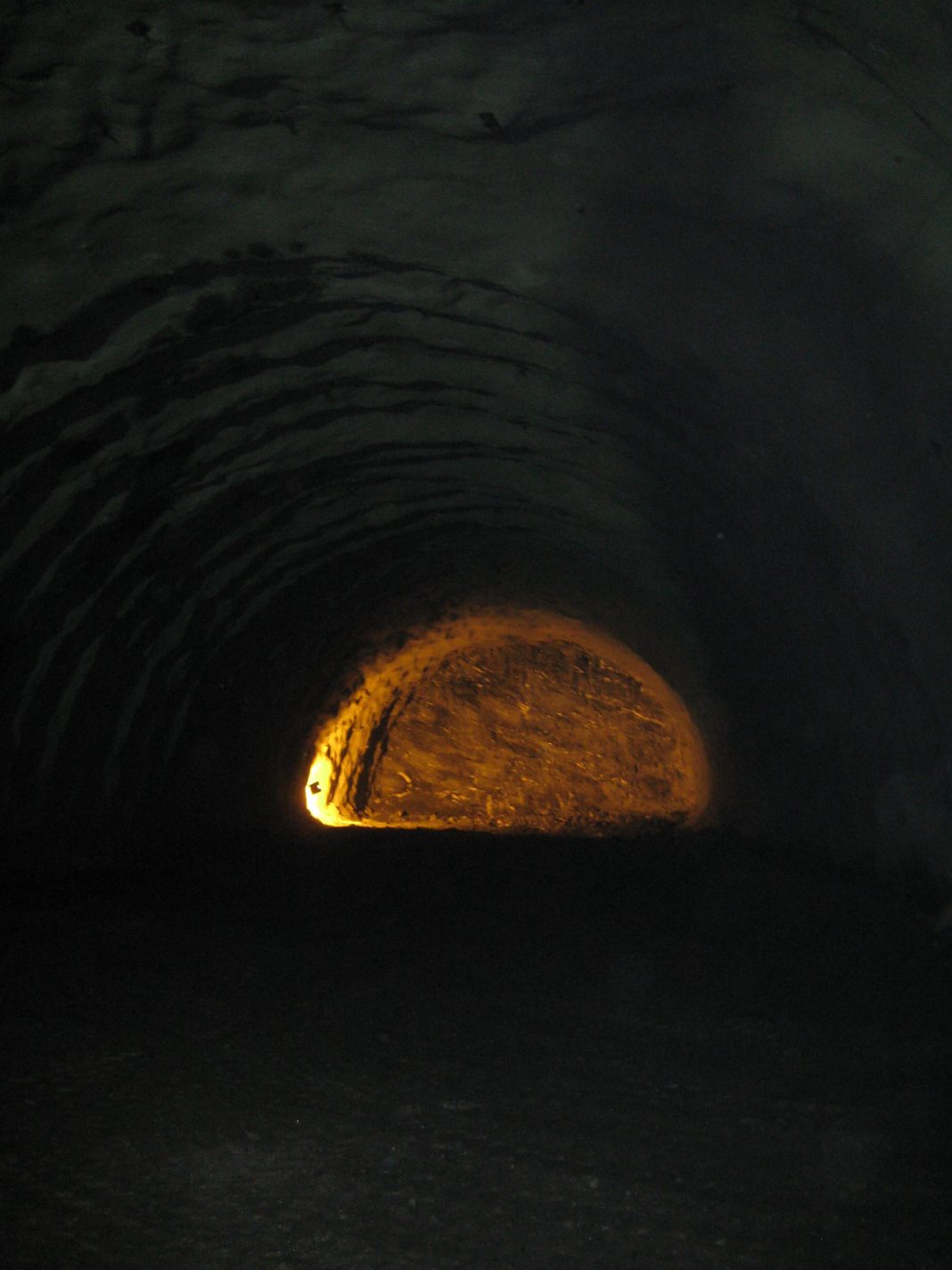Editor’s note: In late 2011, our Editor-in-Chief Saurav Jha, & Publisher Devapriya Roy were invited to visit the under construction Rohtang Tunnel Project, now called the Atal Tunnel, by the Border Roads Organization & the Indian Army. This is the story of that journey & of the tremendous sacrifices made by some to make the Atal Tunnel a reality.
“This April we lost two workers to an avalanche”, P.K Mahajan, Chief Engineer, Project Rohtang Tunnel (RTP) remarked grimly. After a few seconds of silence that reverberated through his prefab office in Solang Valley, Manali, I asked if there had been any casualties in the tunnel itself. “Not this year, no”, came the reply. Here at the RTP headquarters of the Border Roads Organization (BRO) to witness first hand the state of one of India’s foremost strategic construction projects, I start getting a feel of just how dangerous and difficult the execution of such projects is. But executed it has to be – since the 8.82 km long Rohtang Tunnel that seeks to provide all-weather connectivity to Lahaul and Spiti district in Himachal Pradesh and thereby Ladakh is quite literally India’s best bet for securing its northern frontier with China.
The Rohtang Tunnel is being built to offer an alternative alignment on the 429 km long Manali-leh ‘General Staff’ road. As of today, one has to cross the Rohtang pass at an elevation of 13050 feet to reach the Lahaul valley onwards to Ladakh. But herein lies the rub- the Rohtang pass stays open only between June and November each year, thereby effectively shutting off Lahaul and Spiti from the rest of Himachal for a period of six months. The Rohtang tunnel, which burrows underneath the Pir Panjal, will change this, consisting as it does of an approach road branching out from the existing Manali-Leh road at Solang Valley in Manali to its South Portal (SP) at an elevation of 3060 metre) and then another approach road emerging from its North Portal (NP) at an elevation of 3071 metre) to rejoin the Manali-Leh highway as it heads towards Keylong at a place called Sissu in the Lahaul valley along the Chandra river.
The tunnel itself is of a bi-directional horseshoe type. With a carriageway of 10.5 metres (plus a one metre footpath on either side) and vertical clearance of 5.525 metres it will be large enough to accommodate two semi-trailers side by side. Once complete, it is expected to allow vehicles to move at speeds of up to 80 km/hour in the tunnel and the total estimated daily traffic traversing either direction will be around 1300 vehicles. In all, the Rohtang tunnel will shave off some 46 km of travel distance between Manali and Leh which corresponds to a saving of almost 3 hours in terms of travel time.
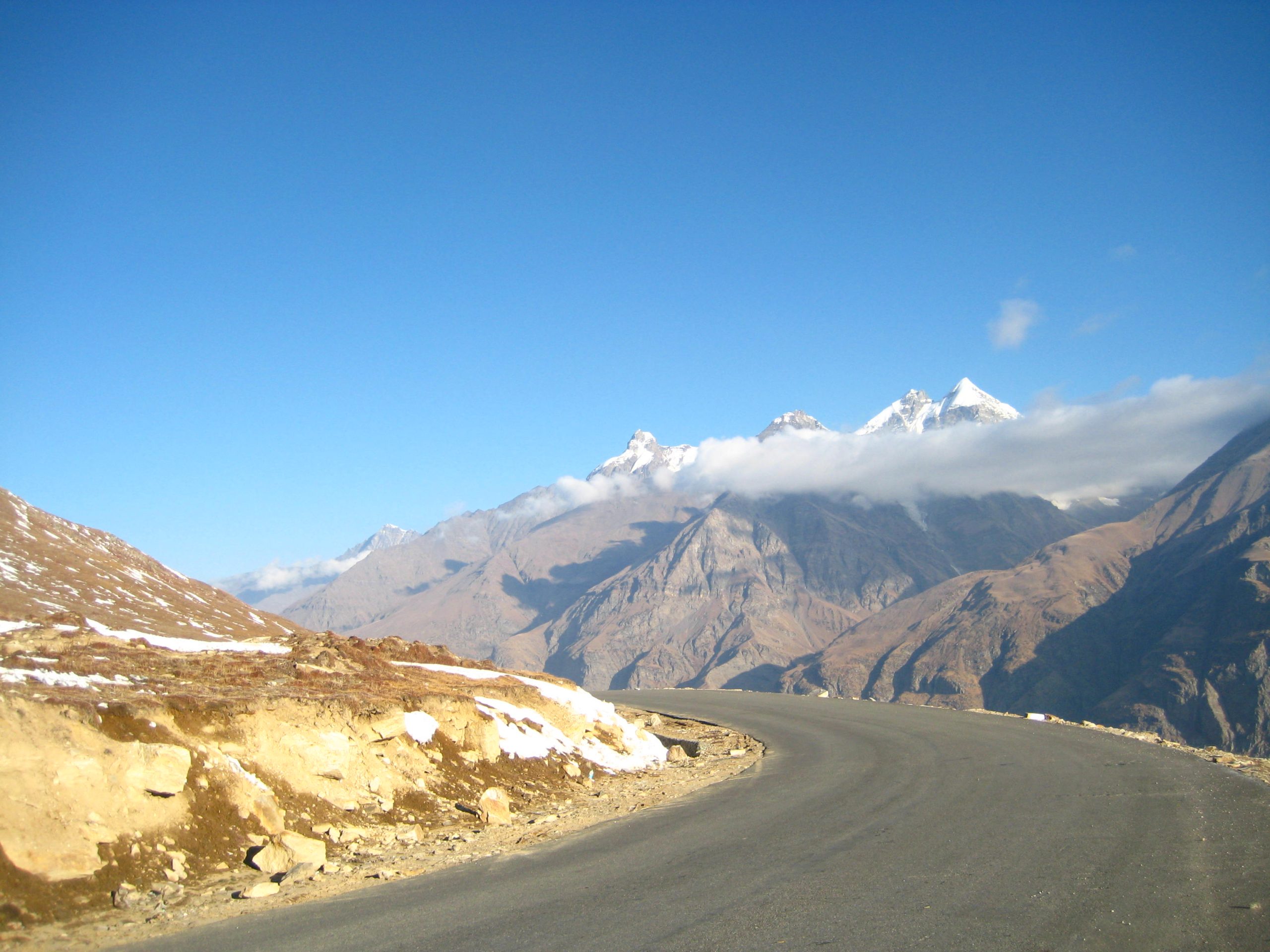
Image: Manali-Leh highway near the Rohtang Pass. Circa 2011.
“At the moment I am happy with the progress we are making”, said Mahajan. “As of date SP heading of 1645 metres and benching on both sides of 407 metres is done while the corresponding figures for NP are 590 metres and 80 metres respectively”, he added. Now, while this translates to 4.65 metres of progress per day if we consider the inaugural blast to have taken place on 30th June, 2010, it is quite fair given the fact that tunnel boring machines (TBMs) are not being used and in the initial stages a cumulative effect has to be overcome. In fact, at the time of writing, some good rock strata had been encountered and progress was apparently exceeding 15 metres a day. The lead contractor executing RTP for BRO is the joint venture (JV) between Austrian major STRABAG and India’s AFCONS with sixty per cent stake held by the former. Their JV emerged as the lowest bidder among some 8-9 others who had met the basic benchmarks.
Mahajan is himself a major votary of the New Austrian Tunneling Method (NATM) which is being used for excavating the Rohtang tunnel. This process essentially involves the use of jumbo rock drills consisting of 1-3 arms coupled with sequential blasting followed by a mucking process using tipper trucks. NATM was chosen for this project based on the rather indifferent record of using TBMs in young fold mountains like the Himalayas. On the other hand, NATM, according to Mahajan provides “the much needed flexibility in the event of geological surprises that may range from finding gushing water, to hitting soil strata, to encountering methane deposits or even hot springs”.
Be that as it may, the genesis of RTP can actually be traced all the way back to 1974 when Indira Gandhi first mooted its construction. But alacrity not being the greatest virtue of the Indian state, it was only in 2002 that the Vajpayee government took up the proposal with some earnestness. After all, the Kargil conflict had made it abundantly clear that an alternative all weather alignment to the Srinagar-Leh highway was the need of the hour if India had to maintain its position in Siachen in particular and Ladakh in general.
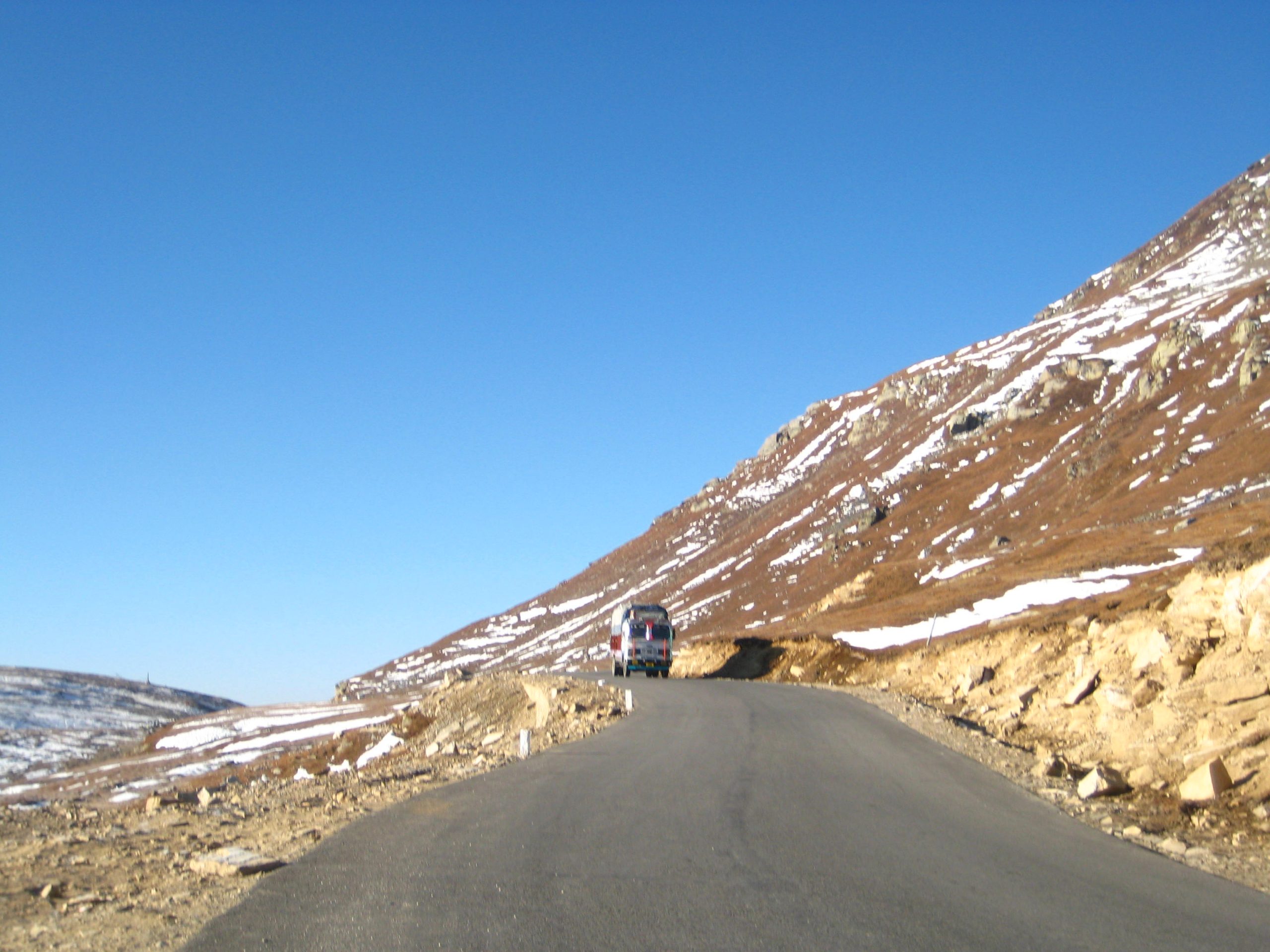
Image: Manali-Leh Highway at the Rohtang Pass, circa 2011.
However, a change of guard in Delhi in 2004 and a forward movement in relations with China in the 2005-07 period meant that no physical work on the tunnel itself really happened for most of the second half of the last decade either, even though the environmental impact assessment (EIA) was ready by 2005-06 and in 2007 SMEC was made lead consultant for the project with the responsibility of profiling the rock structure. It took till 2010 for the actual construction process to get underway, when the foundation stone for the project was laid with much fanfare by Sonia Gandhi. Of course, the government could always say that it was moving forward on preparing the detailed project report and selecting bidders in the prior period.
Nevertheless, it does seem that Chinese activities and indeed assertiveness in the past few years shook up New Delhi sufficiently for it to take the project seriously. It seems to have realized that a head in the sand approach to China’s massive buildup of infrastructure on the Tibetan plateau would not cut it anymore. While India may have done much to fortify Tawang in the Eastern sector it seems that the Chinese have now turned their gaze on Ladakh in the Western sector and this where an increasing number of intrusions are taking place.
In fact, beyond the intrusions that make such great media headlines, the Chinese are also bringing in nomads from Xingjiang and settling them in military-styled barracks in Aksai Chin. While in the immediate the nomads are being used by Beijing to justify building permanent structures ever closer to the unsettled border with India, in the future the artificially managed presence of the nomads could even be used to suggest that the area is one of “settled populations”. Readers would note, that one of the guiding principles of the India-China border talks is that “settled populations are not to be disturbed’, something that the Chinese are spectacularly disregarding by reiterating their claims to Tawang. Nevertheless, given Beijing’s propensity for selective amnesia as evidenced over the years, there is a likelihood that they could suddenly point out this principle to avoid making concessions in Aksai Chin. Indeed, there is every indication that the Chinese want to hold on to the territory they captured from India in 1962 and earlier hints by some quarters in India that “we would give some, we could get some” is wishful thinking. Beijing only wants to “get some”, not give.
On the Indian side, there is a realization that the Lahaul and Spiti valleys and Ladakh in general needs to be developed as well. The first step towards that is to ensure that the populations of these place are not literally and metaphorically cut off from the rest of India for large parts of the year. After all, given that China is now extending connectivity right up to the last point on the territory under its control, it is imperative that the Indian State make the people of these border regions feel wanted. Left unsaid is the fact that in this globalized age the best way to secure an area is to ensure the loyalty of the people of the region through building sustainable socio-economic linkeages.
“More than 40000 people in lahaul and Spiti district will benefit directly from this project”, remarked Mahajan. In fact, people in other parts of Himachal are benefiting from this too, given that 70 percent of the workers employed on this project have been drawn from the state”. He added. In this context, I asked if sufficient skilled labour was available for the project and got the reply that this was indeed the case and that the STRABAG-AFCONS JV had recruited heavily from workers with a background in the Delhi Metro project.
The use of local workers probably ensures that there are fewer acclimatization issues which can make a difference given the very thin margin for error at these altitudes. After all, there are no less than 18 major avalanche prone points on the two approach roads that required mandatory avalanche control structures. Thirteen of these lay on the SP side (referred to as MSP-1 through 13) and five on the NP side (referred to as MNP-1 through 5).
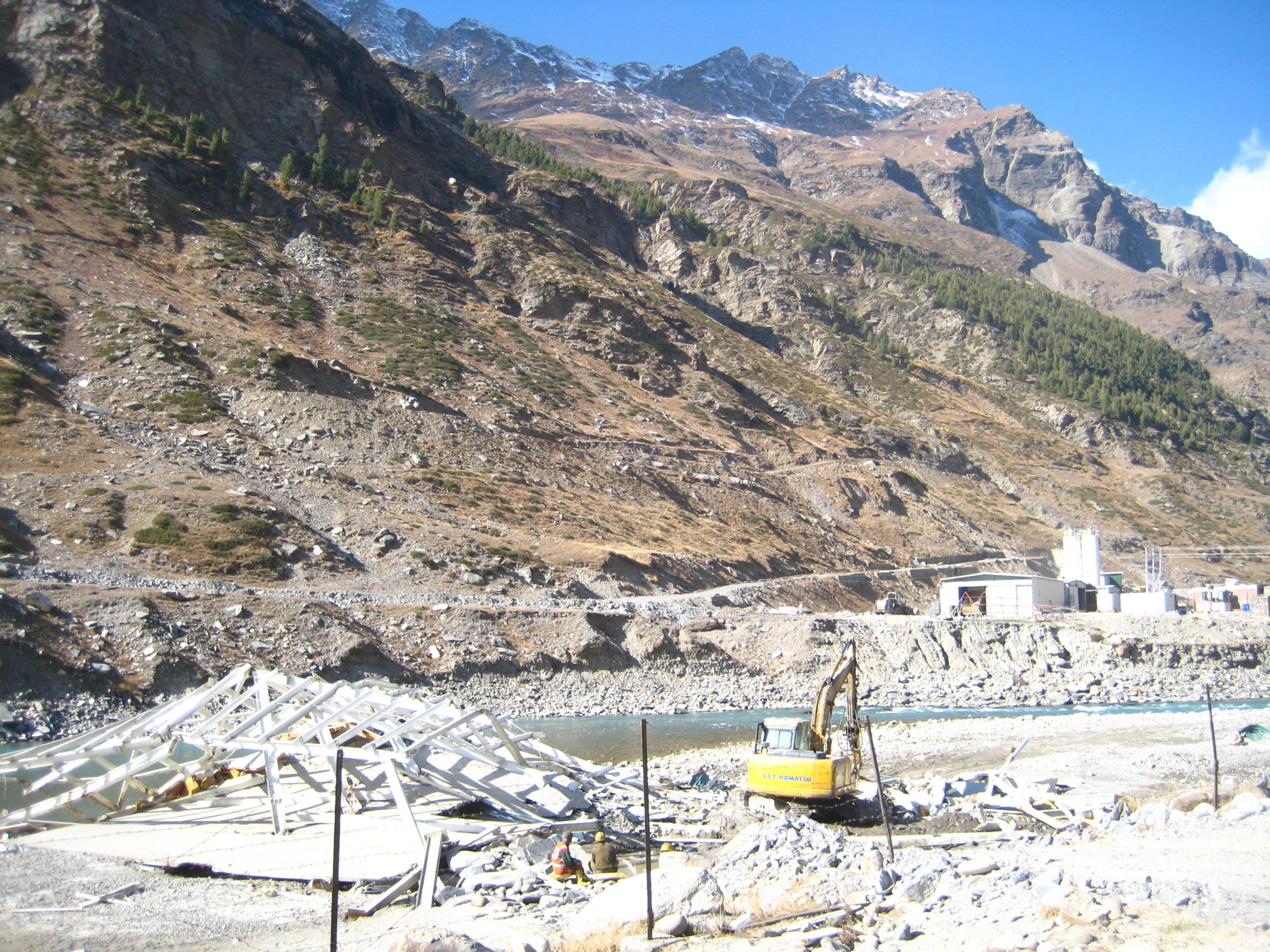
Image: Site building at the north portal that had been destroyed by an avalanche just some days before the author’s visit.
While ‘formation zone’ (i.e. right at the crest of a ridge where an avalanche is likely to form) structures would be necessary for more than ten of the sites, BRO, using technology developed by DRDO, was also building middle and run-off zone avalanche control structures for some of the sites, and these would be shown on the way to SP.
Concluding the initial briefing in the Chief Engineer’s office, Devapriya (my wife and photographer for this excursion) and I set off with, Lt. Colonel Shukla and Executive Engineer Jhangade for SP along the approach road to the same. After passing six of the danger points, we reached MSP-7 where a major middle zone structure was under construction.
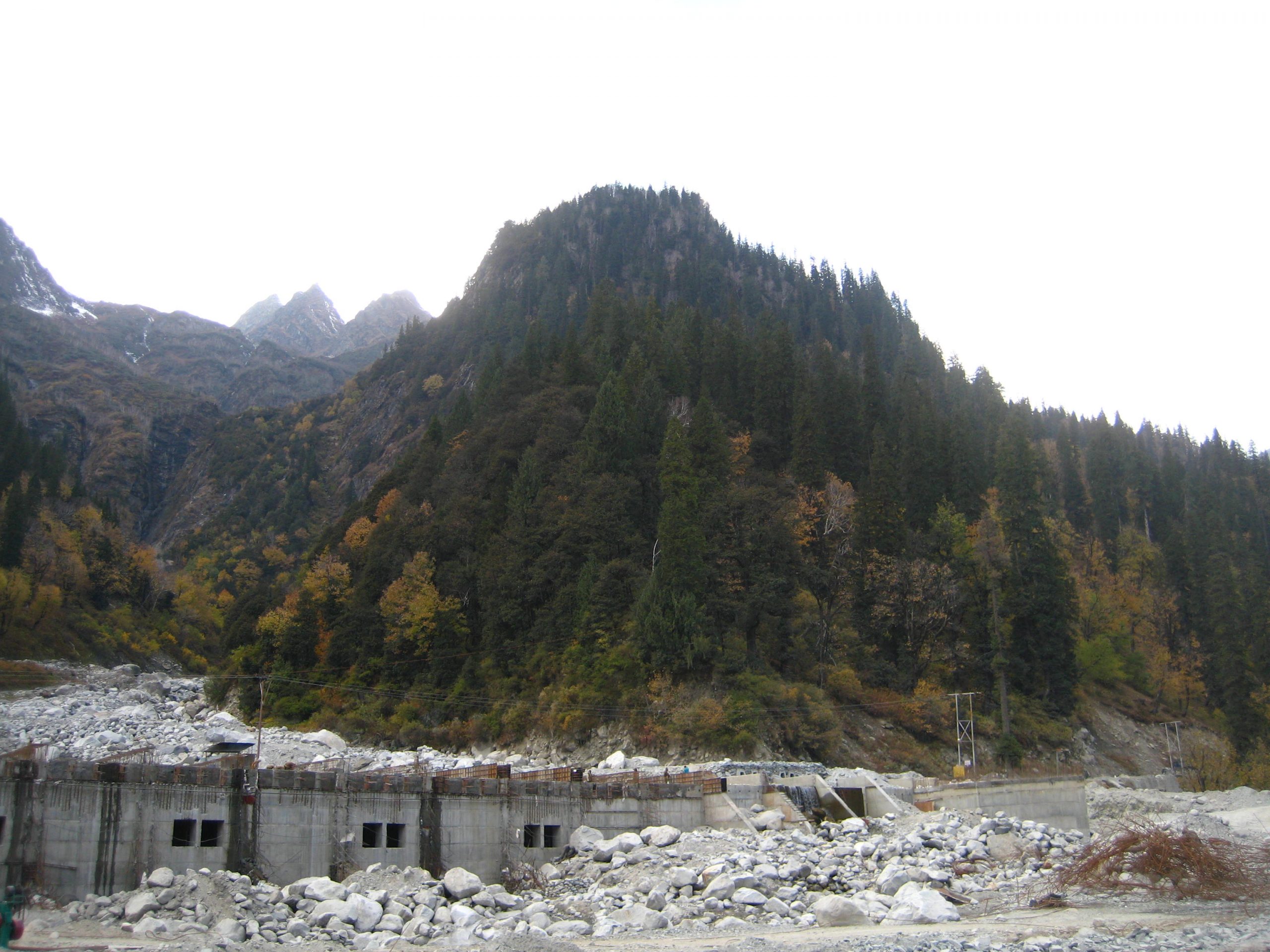
Image: The then under construction Snow Gallery for MSP-7, an avalanche control structure, on the way to the south portal of the Rohtang Tunnel.
The snow gallery for MSP-7, an avalanche control structure that shields the road by letting the avalanche pass overhead and lets the condensed water drain through channels, had been designed by DRDO’s Snow and Avalanche Safety Establishment (SASE) headquartered in Chandigarh. A little while ahead lay MSP-10, where a new diversion structure was under construction. This was of course a run-off zone endeavour and sought to literally divert the descending snow in a direction that would render it non-threatening to a Bailey bridge that would otherwise have been in its path.
Passing the machine workshop for SP on the way (which we were to be shown on the way back) and a SASE facility we finally reached the hallowed place rather late in the afternoon. A slight haze mixed with cloud cover produced a strange pastel effect in the Pir Panjal. SP was clearly abuzz with activity as one could see tipper trucks looking to enter or leave the portal. Our site guide for the tour of the excavated section turned out to be no less than the project head from the STRABAG-AFCONS side, Dr Rosenfeld, a geologist by training.

Image: Author (extreme left) with RTP personnel near the south portal.
Driving into the tunnel with Rosenfeld at the wheel one got a sense of just how much work had to be done for a project of this magnitude. Makeshift lighting illuminated the walls of the tunnel which seemed reasonably evened out for a process that essentially involved drilling and blasting. The basic ventilation system seemed to be working well and the level of dust in the tunnel was lower than what one would expect given that a scheduled blast had taken place not too long ago. About hundred metres from where the tunnel face was, we disembarked and waded through the slush only just sensing drips of water glancing our hard hats from overhead.

Image: Shrine to Lady Barbara patron Saint of artillery men & miners at the south portal.
As we neared the tunnel face, I was witness to large excavators roaring to and fro from it for a short distance picking up the debris or muck left by the recent explosion. A tipper truck was simultaneously gathering the muck from one of the piles created by the excavators.
“Once we have the overhead crane system in place, the process will be speed up greatly. Since the tipper trucks will have to enter a far shorter distance into the tunnel during the mucking process”. Rosenfeld explained. I nodded in agreement and asked as to how much debris had been excavated in volume terms as of then. “About 16,00,000 cubic metres” replied Shukla. “We hope that about 30 percent of that will be recoverable”.
Rosenfeld then motioned the excavators to stop which they did in growling mode, one lined behind the other with lights blazing. Turning to the face he said, “We encountered crumbling rock in the initial days but now I am happy with what I am seeing” and passed a hand over the face for good measure. “Are fossils likely to be found here?”, asked Devapriya. “No I don’t think so.There is no gneiss that I see. In fact I’ll wager that we won’t find any”, was Rosenfeld’s reply. “But what are some of the other wagers going on then? I asked in jest. Shukla replied this time. He said that many workers were firmly holding on to the belief that something of a precious nature may yet turn up. We all laughed a little.
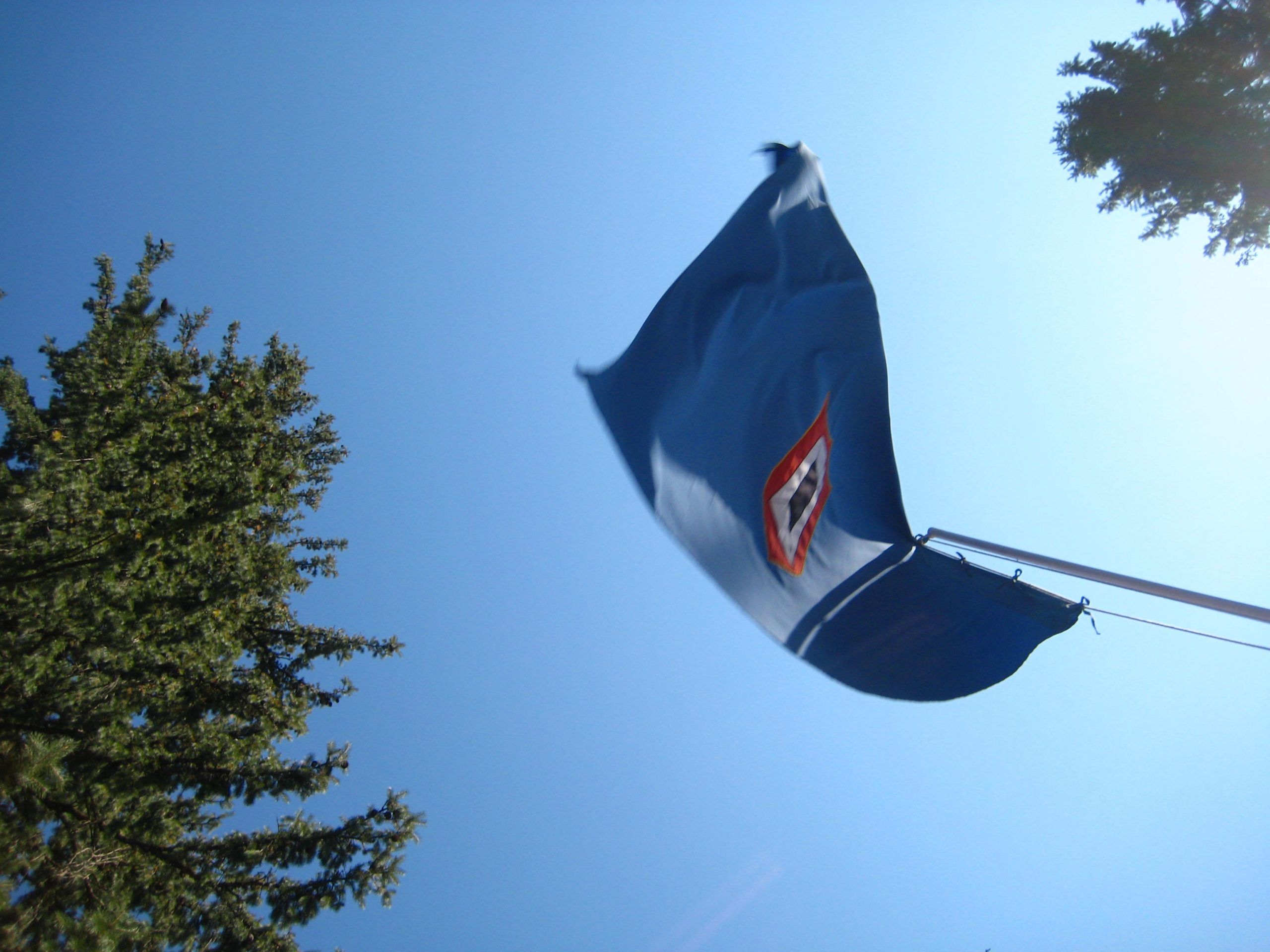
Image: The BRO flag flying proudly at the Project HQ site in the Solang Valley, circa 2011.
On our descent from SP we stopped at the machine workshop for this end of the project. The entire place was lined with precast concrete sections of varying sizes. The largest ones, I was told were for the “egress tunnel” that will run below the main carriageway. Smaller sections were for other minor tunnels running alongside the egress tunnel. Some of these smaller sections already seemed on their way to SP.
“We have a state of the art batching plant here”, mused Shukla. “In this project quality and safety are the key, which is why we have brought in a lot of equipment from overseas that operate at much greater tolerances and are designed for extreme accuracy”, he added. I observed that given the climatic conditions a lot of equipment designed for the European alps wouldn’t really be out of place here, unlike a lot of western equipment which simply breaks down in the heat and dust of India. Shukla nodded in approval.
“ Please enter”, Jhangade indicated towards a facility which said ‘Quality Control lab’ (QLC). The QLC at the machine workshop had extensive facilities for physical testing of sand, stone and concrete. Chemical analysis was however being done in four independent laboratories located around the country. After a few demonstrations of some its processes, our party decided to call it a day.
We started off at first light the next morning for what promised to be a long drive to and fro from NP of the Rohtang tunnel. The sights were expectedly spectacular as we drove up the Manali-Leh road steadily ascending towards the Rohtang pass that lay above. The road however at times provided a very different spectacle. While excellently surfaced for stretches closer to Solang valley, as we neared Rohtang it turned into a layering of rocks and slush in the main. Work was clearly underway though on two-laning this strategic pathway as we saw members of various BRO task forces labouring at various altitudes. Once at Rohtang top, we were witness to a large undulating space covered with thick morning snow and a Stupa marking the veritable gap in the mountains. The road quality here was quite good but deteriorated rapidly as we began our descent to the Lahaul valley.
Reaching the valley, we followed the crystal blue Chandra river to first reach the machine workshop for NP. “That heap you see over there resting on the river bed is what used to be a service building”. Jhangade said drily. “it got blown away when an avalanche came over what we call MNP-4” and with that he pointed towards an odious mountain top. “ Formation zone structure?”, I asked simply. “Absolutely” was Jhangade’s reply as he beckoned us towards our chief quarry.
NP stood out as this gaping darkness in a sea of light. Oddly enough, there wasn’t much activity at the site when I arrived there. As I learnt a little while later from a couple of junior engineers employed by the JV, there was a flash strike on at the site. Not a particularly auspicious moment for a media visit, but nevertheless it served to bring into focus how even projects of vital strategic importance are not insulated from the vagaries of labour unions.

Image: The still under excavation north portal back in 2011
“Its much chillier here, even though this is only five metres higher than SP”, remarked Jhangade. I nodded in approval and excused myself from entering further into the tunnel since I had caught a horrible cold overnight. On the way back, I couldn’t help wondering that the journey to NP is instructive in itself. Since it brings to light just what kind of gains will accrue to a traveler once the Rohtang tunnel is ready in terms of fatigue avoidance and time saving. Moreover, there is a proposal to build a 4.5 km tunnel under Shinku La which would further reduce the travel time between Manalj and Leh by another 5-6 hours. The NP travel experience also makes it rather easy to voice your support for this project as well.
Back from the rather tiring journey to NP, I once again found myself in the Chief Engineer’s office the next morning and promptly asked him about the strike the other day. “Yes there was some sort of issue yesterday”, He admitted. “But it is being resolved”, he pointed out cheerily. “But don’t you think a project of this sort should not have to deal with typical labour related problems?” I ventured. “Ideally yes, but this being India nothing can be said for sure”, He observed. I then asked whether declaring RTP a strategic project would help. Mahajan replied in the affirmative and said his fingers were crossed on that one. As are mine.
The Copyright for all images used in this story is with Devapriya Roy. Follow her on twitter @DevapriyaRoy. Do not use without permission.
Saurav Jha is the Editor-in-Chief of Delhi Defence Review. Follow him on Twitter @SJha1618
A version of this story first appeared in Geopolitics
© Delhi Defence Review. Reproducing this content in full without permission is prohibited.


























